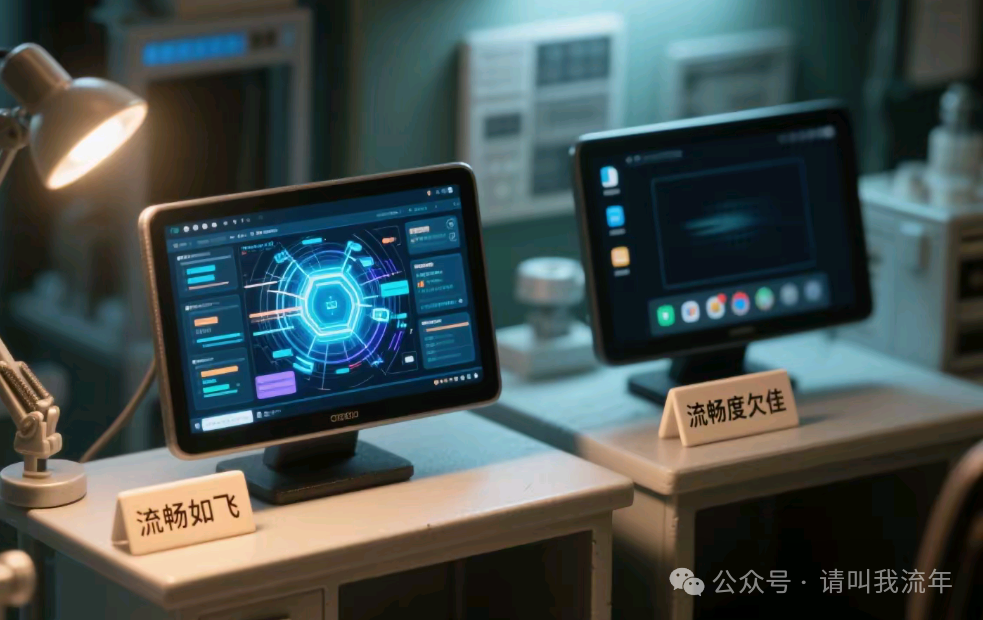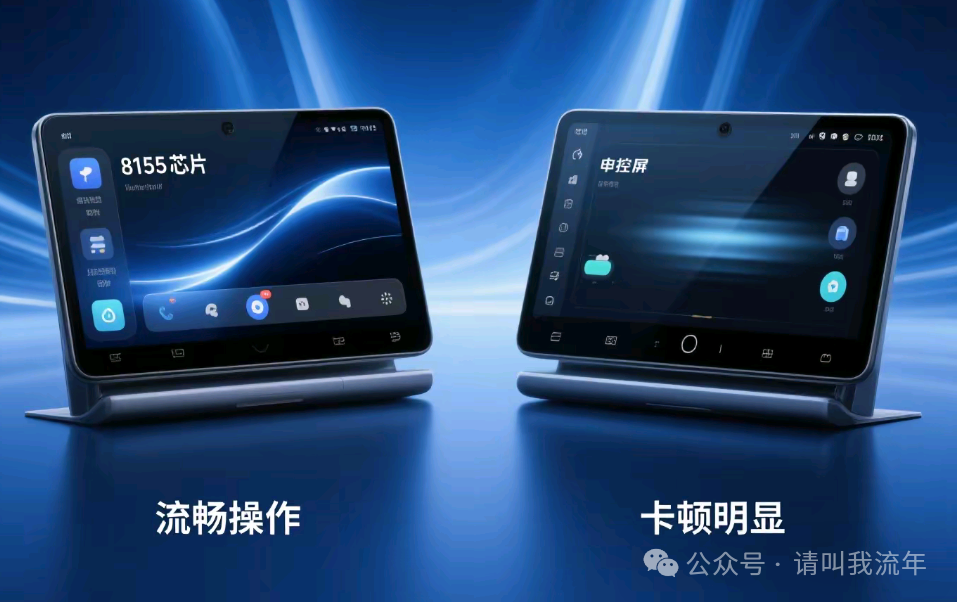In the era of smart cars, the smoothness of the in-car system has become one of the important factors for consumers when purchasing a vehicle. One of the core hardware components that determine the in-car experience is the automotive-grade chip – the Qualcomm 8155. As a mainstream high-performance automotive chip, the 8155 is widely used in mid-to-high-end models of various brands, but the optimization levels among different manufacturers can vary significantly. Today, we will compare the smoothness performance of two central control screens and see why the experience can differ by several levels with the same chip.

Qualcomm 8155: The “Flagship Chip” of In-Car Systems
The Qualcomm 8155 (SA8155P) is a 7nm automotive-grade chip based on the Snapdragon 855, with a computing power of 8 TOPS, supporting high-end features such as multi-screen interaction, 4K display, and AI voice interaction. Theoretically, its performance is sufficient to support a smooth in-car experience, but actual performance can vary greatly due to different manufacturer optimizations.
Comparison of 8155 Experiences from Two Automotive Brands
We selected two popular models equipped with the 8155 chip for practical testing:
Brand A: The in-car system starts quickly, touch response is immediate, application switching is seamless, and the voice assistant responds rapidly.
Brand B: Cold start is slow, there is slight delay during scrolling, occasional stuttering during multi-task switching, and voice recognition is sometimes “sluggish”.
Why is there such a significant difference in experience with the same chip? The key factors are system optimization, thermal design, and software adaptation.

The Key to Smoothness: It’s Not Just Hardware
1. System Optimization: Underlying Tuning Determines the Upper Limit
Brand A has deeply optimized the 8155, using a lightweight UI, pre-loading mechanisms, and intelligent background management to ensure reasonable resource allocation. In contrast, Brand B may have simply ported the Android system without targeted adaptation, leading to resource waste and stuttering.
2. Thermal Design: The Key to Sustained Performance
Although the 8155 is powerful, prolonged high-load operation can easily lead to overheating and frequency reduction. Brand A employs an efficient cooling solution (such as graphene + liquid cooling) to ensure sustained high-performance output from the chip; whereas Brand B may have inadequate cooling, resulting in frequency reduction and decreased smoothness.
3. Software Ecosystem: Adaptation Determines Experience
Brand A collaborates deeply with mainstream navigation, music, and voice assistant applications to optimize the in-car version of the app, while Brand B may directly use the mobile version of the app without adaptation, leading to operational stuttering and display ratio issues.
How Should Consumers Choose?
If you care about the smoothness of the in-car system, you should not only look at the “Qualcomm 8155 chip” label when choosing a vehicle, but also pay attention to:
Actual Experience: Test drive personally to evaluate cold start, multi-task switching, and voice response speed.
Manufacturer Optimization Capability: Prioritize brands with technical accumulation in the smart cockpit field (such as new forces or leading traditional automakers).
OTA Upgrades: A continuously optimized system is more important than a “one-time purchase”.
Conclusion
While the 8155 chip is currently a benchmark for in-car performance, the manufacturer’s optimization capability is the key to determining the experience. With the same chip, different optimization levels can lead to vastly different smoothness. In the future, as new generation chips like the Qualcomm 8295 become more widespread, the gap in in-car experiences may further widen, and consumers must be discerning when choosing a vehicle.
Is your in-car system smooth? Feel free to share your experience in the comments!🚗💨